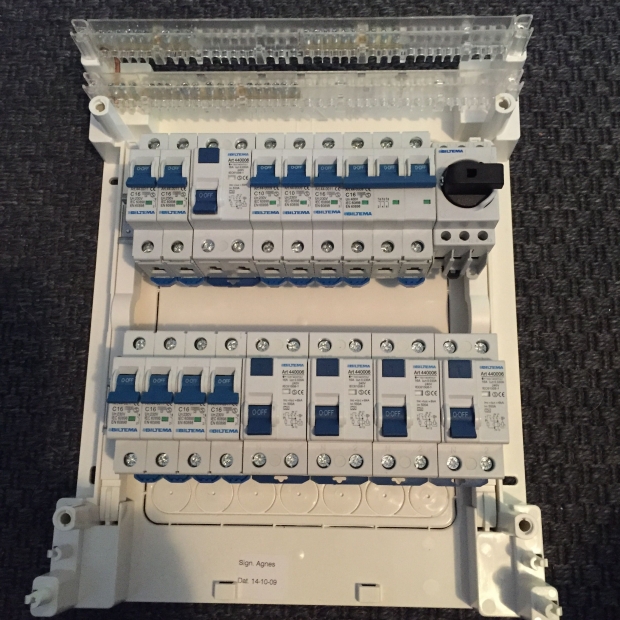We are having our electric redone in order to support, among other things, my brewing hobby!
I am designing and putting together the main panel and two sub-panels. If you are interested in how things are done here in europe, just follow the thread. I'll post some photos here soon.
My feed from the transformer is 3x25A phase conductors plus a neutral. My main board has three isolated rails for mini-circuit-breakers (MCB), so I'll just run a phase conductor from the main switch to a breaker on each rail and then use a floating bus system to connect the first MCB to the rest of the MCBs and residual-current-devices (RCDs) in the row. RCD is what you north american people like to call GFCI.
I am designing and putting together the main panel and two sub-panels. If you are interested in how things are done here in europe, just follow the thread. I'll post some photos here soon.
My feed from the transformer is 3x25A phase conductors plus a neutral. My main board has three isolated rails for mini-circuit-breakers (MCB), so I'll just run a phase conductor from the main switch to a breaker on each rail and then use a floating bus system to connect the first MCB to the rest of the MCBs and residual-current-devices (RCDs) in the row. RCD is what you north american people like to call GFCI.



































![Craft A Brew - Safale BE-256 Yeast - Fermentis - Belgian Ale Dry Yeast - For Belgian & Strong Ales - Ingredients for Home Brewing - Beer Making Supplies - [3 Pack]](https://m.media-amazon.com/images/I/51bcKEwQmWL._SL500_.jpg)






